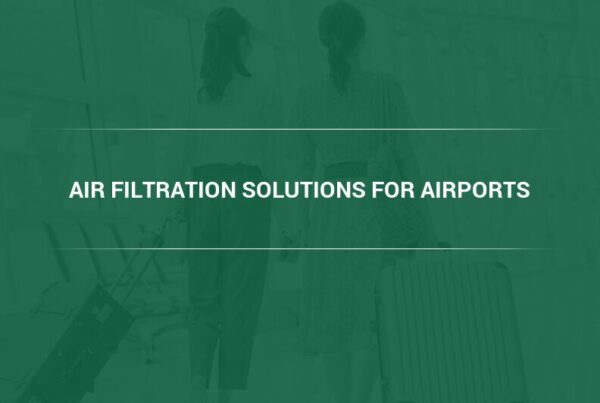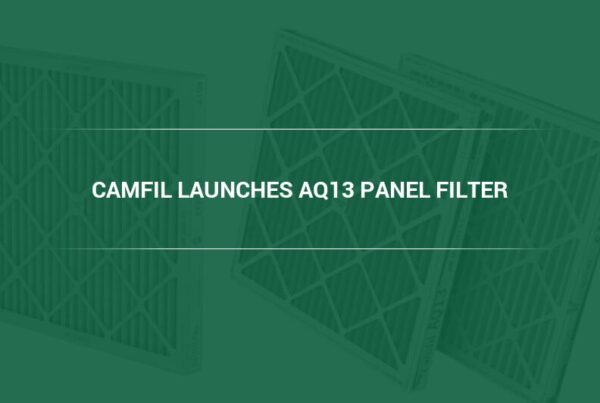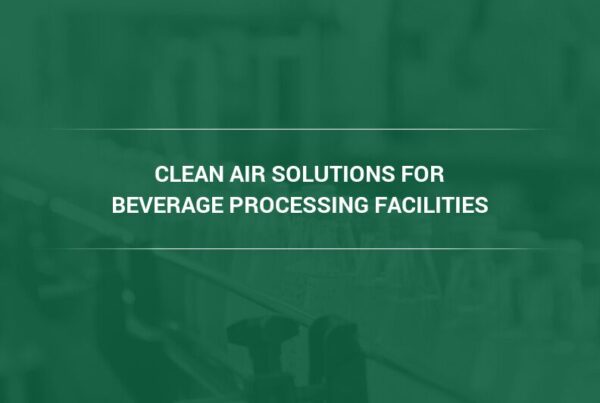The transportation sector is one of the largest contributors to air pollution in the world. Despite the amount of air pollution caused by the transportation sector, efforts to reduce emissions from cars have been only marginally successful and in many ways, the landscape of emissions from motor vehicles looks much like it has over the past few decades. Could emerging digital technologies lead to a revolution in vehicle transportation, creating cleaner and safer vehicles?
The emergence of technology like ride sharing programs, more powerful batteries and artificial intelligence could create a transportation culture where emissions from motor vehicles are drastically reduced. How can digital technologies reduce emissions from cars and reliance on industrial air filters to capture pollutants?
The Need for Industrial Air Filtration Units
“The transportation industry releases millions of tons of air pollutants into the air every year,” says Kevin Wood, Vice President Sales & Marketing at Camfil USA. “These air pollutants include nitrogen oxide, particulate matter, and volatile organic compounds. In the United States alone, the transportation sector is responsible for over 55% of all emissions of nitrogen oxide, almost 10% of all volatile organic compounds and almost 10% of all particulate matter. All of these air pollutants must be absorbed by industrial air filtration units, or the pollutants will do substantial damage to people’s health.” (1)
The pollution emitted by the transportation sector is thought to be responsible for thousands of hospitalizations and premature deaths every year. Cleaning up emissions from cars and trucks will prevent almost 40,000 premature deaths and 34,000 hospitalizations, as well as 4.8 million lost work days by 2030.
Diesel engines are notorious polluters, being used to power large trucks and boats which move cargo across the nation. Though it was once thought that diesel engines were cleaner than traditional fuel engines, recent research has suggested the diesel engines actually release more pollution than regular fuel engines.
Commercial Air Filtration Systems Handle Criteria Air Pollutants
Commercial air filtration systems can capture the various harmful pollutants released by the transportation sector. The combustion of fossil fuels releases a variety of air pollutants like particulate matter, nitrogen oxide, sulfur dioxide, and volatile organic compounds such as benzene and formaldehyde.
Particulate matter refers to a variety of small particles that can damage the lungs and cardiovascular system. PM is grouped into three different categories, particulate matter is usually grouped into three different categories, PM1, PM2.5, and PM10. These particles are smaller than 1 µm across, smaller than 2.5 µm across, and smaller than 10 µm across respectively. The smaller that these particles are, the more dangerous they are to human health. Their small size lets them penetrate into the human lungs and bloodstream where they can cause problems like heart attacks, stroke, chronic obstructive pulmonary disease, and an increased risk for cancer.
Sulfur dioxide and nitrogen oxide are colorless gases that are released by the combustion of fossil fuels. Nitrogen oxide leads to problems breathing and can exacerbate pre-existing conditions like asthma or potentially even cause it. Sulfur dioxide irritates the lungs and throats, and exposure to high levels of both chemicals can reduce lung function permanently. The two compounds can also cause the buildup of fluid in the lungs.
Volatile organic compounds refer to a wide range of chemicals compounds that can interact with sunlight and heat in the atmosphere to create tropospherically or ground-level ozone. Ozone at ground level is a key ingredient of smog, which contributes to the greenhouse effect and irritates people’s eyes, throat, and nose. Frequent exposure to ozone pollution can permanently damage a person’s lungs, and VOCs like benzenes are carcinogens which increase a person’s risk of developing cancer.
Portable Industrial Air Purifier and Industrial HEPA Filters
“People who live in highly polluted regions of the nation, often those regions with the most vehicle traffic, may wish to use Industrial HEPA (High-Efficiency Particulate Air) filters to protect their lungs,” says Wood. “HEPA filters can be found in portable industrial air purifiers, in addition to in HVAC systems. HEPA filters can trap the smallest and most dangerous airborne particles, up to 99.97% of the time. HEPA filters capture particulate matter and prevent it from getting into people’s lungs. (2)”
Though most buildings should be fine with using regular HVAC air filters rated 8-11 MERV, those buildings found in cities with substantial traffic may want to use higher levels of filters, including HEPA filters.
It isn’t always optimal to choose HEPA filters because HEPA filters demand that HVAC systems work harder to push air through them, increasing energy bills. Buildings will want to choose industrial air filters that achieve a compromise between particle capturing efficiency and air flow ability.
How Digital Technologies Can Reduce the Burden on Commercial Air Filters
There are multiple ways that emerging digital technologies could reduce the need for commercial air filters to defend people’s health. Digital technologies like ride-sharing apps, autonomous vehicles, and more efficient batteries can all reduce levels of ambient air pollution.
“Ride-sharing apps allow people to carpool, sharing rides and reducing the amount of gasoline used by individuals. Not only are ride-sharing apps reducing the number of emissions, advances in electric technology is leading to the creation of more energy efficient batteries that charge faster,” states Wood. “This means that the range and charging speed of electric vehicles is constantly increasing. As electric vehicles become more efficient, their level of adoption grows. Electric vehicles emit almost zero emissions, so as more electric vehicles are adopted the overall level of emissions will decrease.” (3)
Advances in artificial intelligence and machine learning algorithms have enabled the creation of vehicles with automated functions. Most new vehicles created today have some kind of automated function, and it is likely that completely autonomous vehicles will be on the market in the next five to ten years.
The combination of advances in communications technology, energy efficiency, and artificial intelligence could lead to a revolution in the transportation industry. Some analysts predict that within the next couple decades most people will get to their destination by summoning an autonomous, electrical, zero-emissions vehicle to take them to their destination. It will be so cheap to travel in an automated electric vehicle that people will largely abandon personal fossil fuel driven vehicles and as such emissions of air pollutants will drop dramatically.
New infrastructures will need to be created to support these new electrical vehicles though, such as charging stations and special lanes or zones for autonomous commuter vehicles.
Augmenting Industrial Air Filtration And Ventilation with Pollution Control Strategies
While digital technologies may revolutionize the transportation sector and lead to fewer air pollutants for industrial air filtration and ventilation to remove, it remains important to pursue traditional methods of air pollution reduction.
Traditional methods of reducing air pollution include establishing limits on levels of emissions from industrial or chemical facilities, in addition to the transportation industry. Industrial facilities are massive sources of pollution, along with cars, so regulation should be used to reduce the number of pollutants emitted by them. Positive incentives to reduce levels of air pollution can also be employed, such as reduced fees for companies who cut air pollution levels.
Individuals should also be encouraged to reduce their own emissions and carbon footprint by taking steps to reduce the amount of energy they use and the number of fossil fuels their devices emit. Lights and appliances should be turned off when not in use and people can carpool or take public transportation to their destinations.
Though digital technology may help reduce overall levels of air pollution in the future, industrial air filters are still important for your health. Contact Camfil USA today to purchase high-quality industrial air filters and defend your lungs from harmful air pollutants.
Sources:



